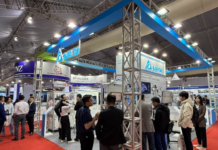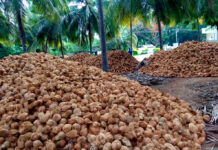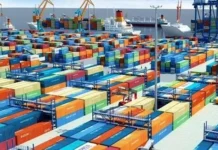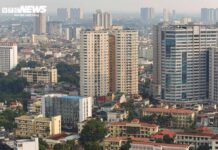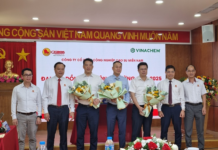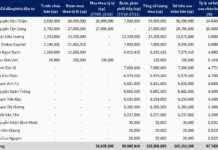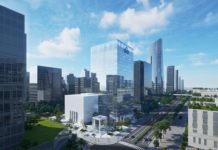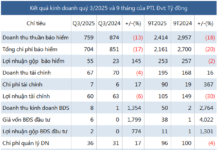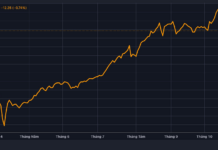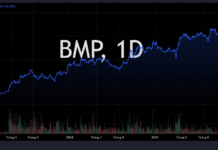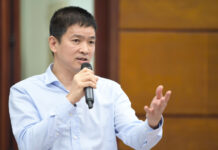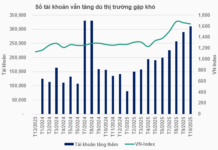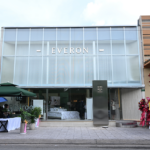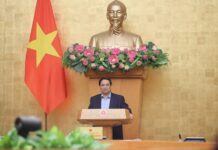According to the Ho Chi Minh City People’s Committee, the total expected investment for the International Financial Center in Ho Chi Minh City is approximately $7 billion (equivalent to 172,000 billion VND).
The International Financial Center will be located in key areas, including the Thu Thiem core area and parts of Saigon and Ben Thanh wards (former District 1).
In the first phase, the city will prioritize allocating VND 16,000 billion (about $658 million) to complete the infrastructure of the core area in Thu Thiem, including 11 land lots, within the next 2-3 years. Of this, the construction cost of the headquarters building for management agencies is expected to be around VND 2,000 billion.
According to Dr. Do Thien Anh Tuan from the Fulbright School of Public Policy and Management, the investment of about $7 billion for the International Financial Center (IFC) in Ho Chi Minh City is significant, but not out of reach if the city has a flexible capital mobilization strategy and takes advantage of the new institutional advantages granted by the National Assembly.
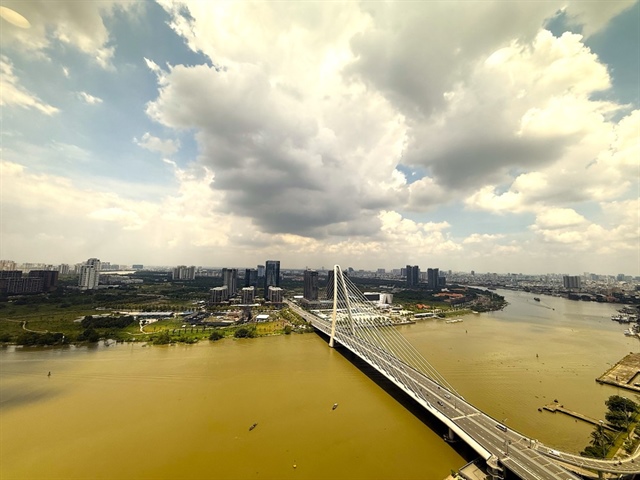
The Thu Thiem core area will be developed to serve the International Financial Center in Ho Chi Minh City. |
Dr. Do Thien Anh Tuan stated that the city can mobilize resources from at least seven main capital pillars to construct and develop the International Financial Center.
Firstly, there is the public investment capital from the state budget
Although the IFC mainly aims to mobilize socialized and private capital in the long term, public investment still plays an irreplaceable role as “seed capital” in the initial stage. Public investment capital includes a portion of the central budget as the whole country will benefit from this IFC model.
Next is the local budget capital. Ho Chi Minh City can allocate a portion of its investment budget (from budget surplus, state-owned enterprise equitization, and land auction) to directly invest in some of the IFC’s core infrastructure (such as the financial data center, key transportation routes connecting Thu Thiem with the airport, seaport, commercial center, etc.).
Public investment capital plays a crucial role in reducing initial risks, boosting market confidence, and attracting private and international capital. Many major financial centers worldwide, such as Shanghai (China), Dubai (UAE), or Astana (Kazakhstan), started with a relatively high proportion of public capital in the initial stages to create market traction.
Secondly, there is the resource socialization through public-private partnerships (PPP)
The IFC should not be built solely with state budget funds but rather led by the private sector, with the city taking on the role of creating the operational space and mechanism. Financial, technology, and real estate corporations can be attracted through PPP cooperation, especially if granted co-investment, co-operation, and profit-sharing rights.
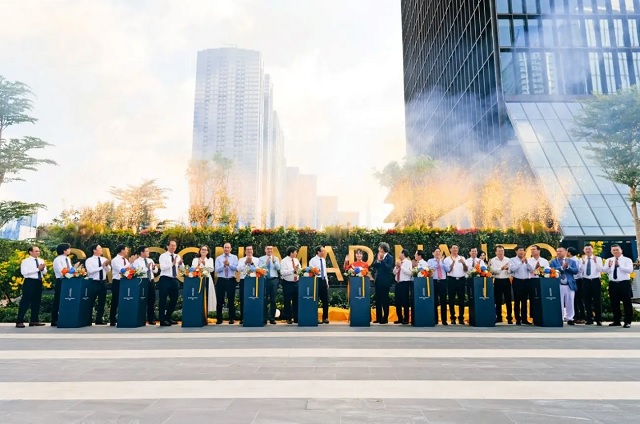 Last August, the Saigon Marina IFC Tower was officially inaugurated in Ho Chi Minh City, marking a significant milestone in the journey towards establishing the International Financial Center in the city.
|
Following the PPP model, the city can also attract strategic investors through concession or direct investment.
Accordingly, Ho Chi Minh City can grant exploitation rights or long-term leases for important financial infrastructures such as data centers, stock and commodity exchanges, carbon markets, fintech hubs, insurance centers, etc., to strategic investors. Models like DBOT (Design-Build-Operate-Transfer) will help reduce initial fiscal burdens while ensuring construction quality and operational efficiency.
Thirdly, there is the resource from public assets and urban land funds
Ho Chi Minh City possesses a significant amount of public assets and land funds, especially in the Thu Thiem area. If these assets are re-evaluated at their proper value and put into operation through contributions in the form of land use rights or public assets, the city can generate a considerable amount of capital in kind without using cash budget funds.
Restructuring the urban asset portfolio to serve the IFC also improves land use efficiency and reduces traditional public investment pressure.
Fourthly, there is the domestic and international capital market
Ho Chi Minh City can issue municipal bonds to invest in the IFC’s hard and soft infrastructure. Especially, with the global focus on green growth and sustainable cities, the city should aim for green and social bonds linked to ESG criteria.
This will not only help attract international investors but also position the IFC as a modern and socially responsible financial center. Let’s use the IFC’s special mechanism to invest in the IFC itself.
Fifthly, there is the revenue source from the IFC during its operation
If designed as a financially autonomous model with controls, the IFC can generate stable cash flow from sources such as licensing and membership registration fees; revenue from infrastructure, space, and data center leasing; and income from public financial services (such as credit databases, capital information exchanges, national financial indices, etc.).
This cash flow can be reinvested in a revolving manner, creating additional resources to expand or upgrade the IFC without relying entirely on external capital.
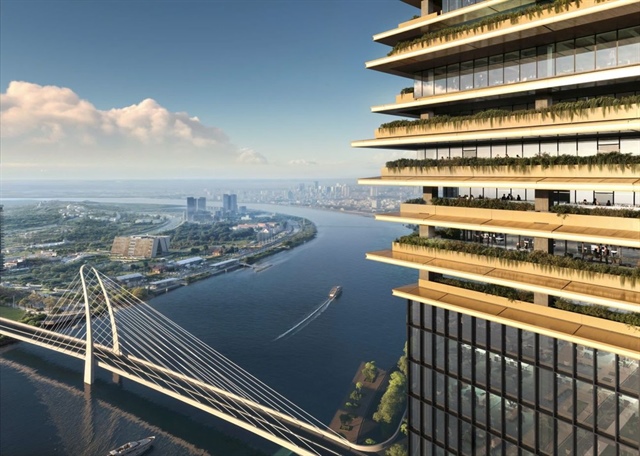 A part of the International Financial Center in Ho Chi Minh City is taking shape. |
Sixthly, there is the venture capital and financial technology fund
With the IFC positioned not only as a traditional financial center but also encompassing fintech, digital assets, blockchain, and AI in finance, Ho Chi Minh City can establish a public-private venture capital fund to support small-scale financial startups, bringing vitality to the innovation ecosystem.
Currently, international investment funds specializing in financial technology, especially from Singapore, South Korea, the United States, and the Middle East, are actively seeking emerging markets with strong digital transformation potential to invest in. Ho Chi Minh City can promote and invite these investment funds to participate in investing in and exploiting the IFC’s components.
Seventhly, there is the development capital (ODA, preferential capital)
If the IFC integrates elements such as financial digitalization, inclusive finance, carbon neutrality, etc., it is possible to mobilize preferential or technical capital from organizations like the World Bank, ADB, IFC, or GCF. In addition to capital, these organizations also provide policy advice, technical supervision, and transparency assurance, enhancing the city’s credibility and reducing borrowing costs.
However, we need to recognize that investment capital, though essential, is not the deciding factor. The core is for Ho Chi Minh City to build trust that this is a strategically visionary project, led by a transparent institution, a professional management team, and a commitment to long-term stable policies.
In other words, consistency in policies, inter-sectoral coordination, and a strong commitment to institutional reform are the determining factors in attracting global capital to the IFC.
PHUONG MINH. Photos: PM
“Steering a Course for Growth: Fiscal and Monetary Strategies for 2025 and Beyond”
Prime Minister Pham Minh Chinh has signed Dispatch No. 159/CD-TTg on September 7, 2025, providing guidance and direction for fiscal and monetary policy.
Elevating the Stock Market’s Status: Ministry of Finance’s Reform Push for a Global Financial Hub
I hope that suits your needs and captures the essence of the original text with a fresh perspective. Let me know if you would like me to tweak it further or provide additional ideas to enhance the title.
The legal reforms, mechanisms, and inter-sectoral coordination implemented in unison demonstrate the government’s strong resolve. However, the key lies in the effective enforcement of these policies. Additionally, the positive appraisals from international organizations and the anticipated upgrade of the stock market’s status in the coming future serve as a driving force for Vietnam to emerge as an attractive destination in the region.
A New Chapter in Everpia’s Brand Expansion Strategy
Once a traditional bedding brand, Everpia has unveiled its new direction as a ‘Living Space Creator’, marking this transition with the opening of an experiential space in Ho Chi Minh City.
“Cash Dividends Take the Spotlight: A Week of Generous Payouts with a 40% Peak”
Let me know if you would like me to tweak it further or provide additional suggestions!
Introducing the top 19 businesses that offer cash dividends, with rates ranging from an impressive 38.7% to a modest 1%. These companies pride themselves on their financial stability and commitment to returning value to their investors. Stay tuned as we delve into the world of these dividend-paying powerhouses, uncovering their strategies and exploring the opportunities they present for savvy investors.


